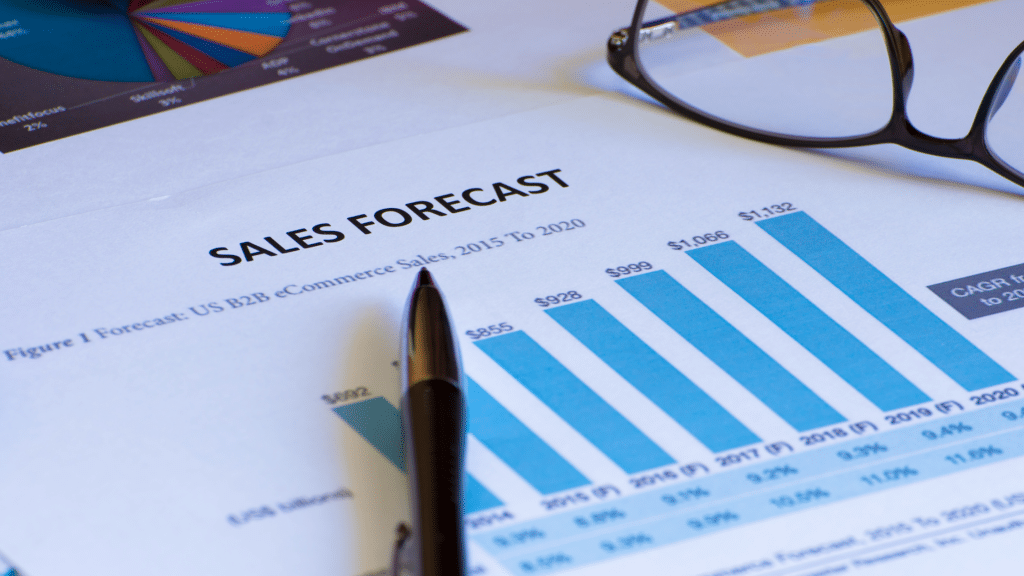Staying ahead of your competition in business is fundamental for ensuring business growth.
One key tool that has emerged in recent years is predictive analytics. This powerful technique allows businesses to use data and gain actionable insights for smarter business intelligence strategies.
Understanding Predictive Analytics
Predictive analytics involves using historical and real-time data to identify patterns and make predictions about future outcomes or events. Through analyzing large datasets and employing advanced machine learning algorithms, your business can gain valuable insights that guide decision-making and drive growth. This method has become increasingly popular across various industries, including finance, healthcare, marketing, and manufacturing, owing to its ability to provide organizations with a competitive edge.
The Basics of Predictive Analytics
Predictive analytics relies on statistical models and machine learning algorithms to analyze data. The machine learning models are trained to recognize patterns and make predictions based on historical data. Through extracting meaningful information from large volumes of data, predictive analytics helps businesses make accurate forecasts and improve their business processes.
Data preprocessing is a key step in predictive analytics. Data preprocessing involves cleaning and transforming raw data to ensure its quality and compatibility with the predictive models. Data preprocessing helps to eliminate outliers, handle missing values, and standardize the data, making it suitable for analysis. Once the data is preprocessed, it is fed into the predictive models for analysis. The machine learning models employ various techniques, such as regression analysis, decision trees, and neural networks, to identify patterns and make predictions.
The Role of Predictive Analytics in Business Intelligence
Using predictive models, your business can identify trends, anticipate customer behavior, and optimize operational efficiency. This enables your team to make data-driven decisions, reduce risks, and gain a competitive advantage in the market.
- Customer segmentation: Through analyzing customer data, you can identify different segments based on their preferences, behaviors, and demographics. This enables your business to tailor marketing strategies and offerings to specific customer segments, increasing customer satisfaction and loyalty.
- Demand forecasting: Analyzing historical sales data and external factors such as market trends and economic indicators, your business can predict future demand for your products or services. This helps you to optimize your business’ inventory management, production planning, and supply chain operations, reducing costs and improving customer satisfaction.
- Fraud detection: Predictive analytics is also used in fraud detection, risk assessment, and predictive maintenance. Its versatility and ability to uncover hidden insights make it a highly valuable tool.
The Intersection of Business Intelligence and Predictive Analytics
Business intelligence refers to the strategies and technologies that organizations use to collect, analyze, and interpret data in order to gain insights and drive informed decisions. Predictive analytics enhances business intelligence by taking it a step further. While traditional business intelligence provides historical insights, predictive analytics enables your business to make accurate forecasts and predictions for the future.
Combining historical data with advanced algorithms, your business can uncover hidden patterns, identify upcoming trends, and make proactive decisions that drive growth and innovation. Real-time data analysis is an emerging trend, empowering your team to use real-time data streams and machine learning algorithms to make instant predictions and drive immediate action.
The Benefits of Using Predictive Analytics in Business Intelligence
Predictive analytics offers numerous benefits to businesses that integrate it into their business intelligence strategies. Here are a few key advantages:
- Improved Decision Making: Using predictive analytics, organizations can make more informed decisions. Predictive models help you to identify potential risks and opportunities, enabling you to mitigate risks and capitalize on emerging trends.
- Increased Operational Efficiency: Predictive analytics enables businesses to optimize their operations and improve efficiency. Analyzing data and identifying bottlenecks or areas for improvement, your business can streamline processes, reduce costs, and enhance productivity.
- Enhanced Customer Experience: Predictive analytics enables you to get a deep understanding of your customers’ preferences, behavior, and needs. Using this knowledge, you can personalize offerings, deliver targeted marketing campaigns, and provide exceptional customer experiences that cultivate loyalty and drive growth.
Implementing Predictive Analytics in Your Business Strategy
While the benefits of predictive analytics are clear, implementing this powerful tool into your business strategy may seem daunting. Here are a few key steps to incorporate predictive analytics successfully:
- Define Your Objectives: Clearly outline what you aim to achieve with predictive analytics. Identify specific areas or challenges where predictive analytics can provide valuable insights.
- Gather Relevant Data: Ensure you have a comprehensive and clean dataset that aligns with your objectives.
- Choose the Right Predictive Models: Select the appropriate algorithms and models based on your objectives and dataset. Consider factors such as scalability, interpretability, and accuracy.
- Train and Test Your Models: Use a portion of your dataset to train your models and validate their performance. Continuously refine your models as new data becomes available.
- Integrate Predictive Analytics into Your Workflows: Embed predictive analytics into your existing business intelligence tools and processes to ensure seamless integration into your decision-making processes.
Overcoming Challenges in Implementation
Implementing predictive analytics may present some challenges, such as lack of expertise, data quality issues, and resistance to change. Partnering with a no-code predictive and prescriptive analytics tool like Graphite Note can simplify the implementation process. Graphite Note provides a user-friendly interface that empowers business users to leverage predictive analytics without deep technical expertise.
The Future of Predictive Analytics in Business Intelligence
As technology advances and more data becomes available, the possibilities for predictive analytics are endless. Emerging trends include the use of predictive analytics in real-time decision-making, enabling businesses to respond rapidly to changing market conditions, customer demands, and competitive landscapes. Partnering with a no-code predictive and prescriptive analytics tool like Graphite Note empowers your business to unlock the full potential of predictive analytics, simplify implementation, and make data-driven decisions.
The benefits are clear: improved decision-making, increased operational efficiency, and enhanced customer experiences. Implementing predictive analytics may present challenges, but with the right approach and tools like Graphite Note, organizations can successfully navigate this transformative journey. Ready to transform your business intelligence with the power of predictive analytics? Graphite Note is your partner in unlocking the full potential of your data, making it simple to predict business outcomes with precision and turn data into decisive action plans. Request a Demo today!





